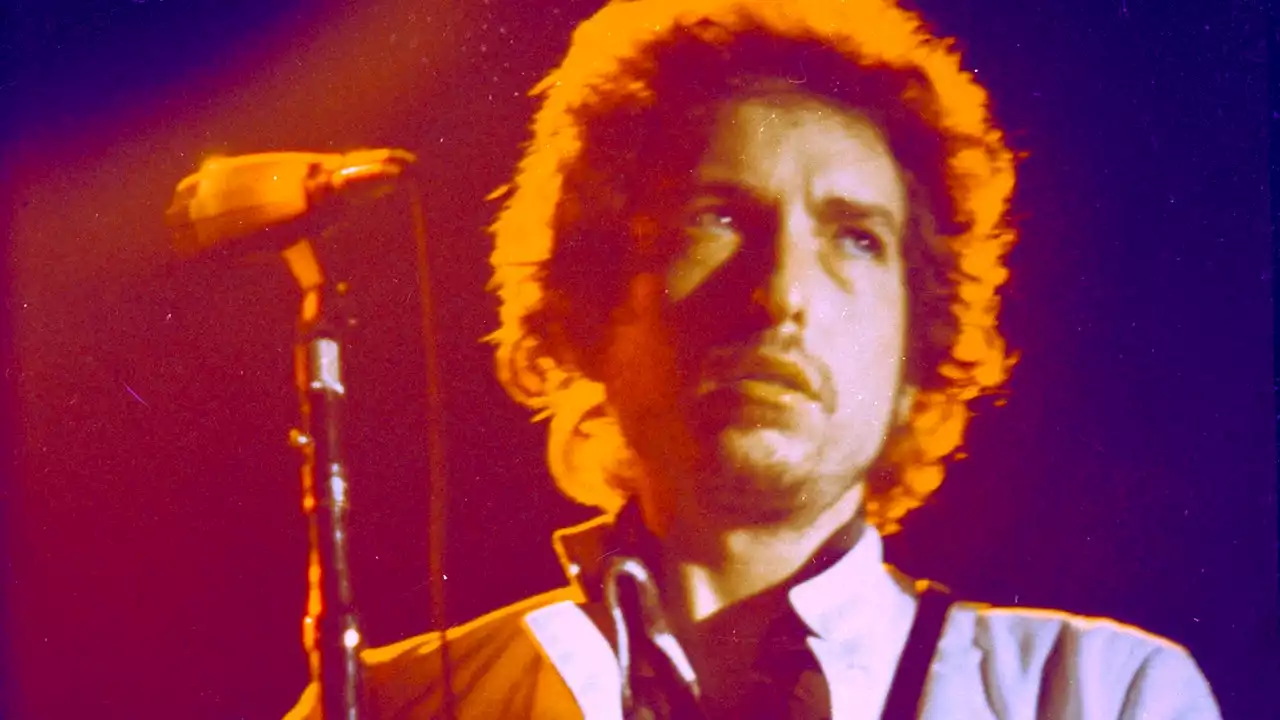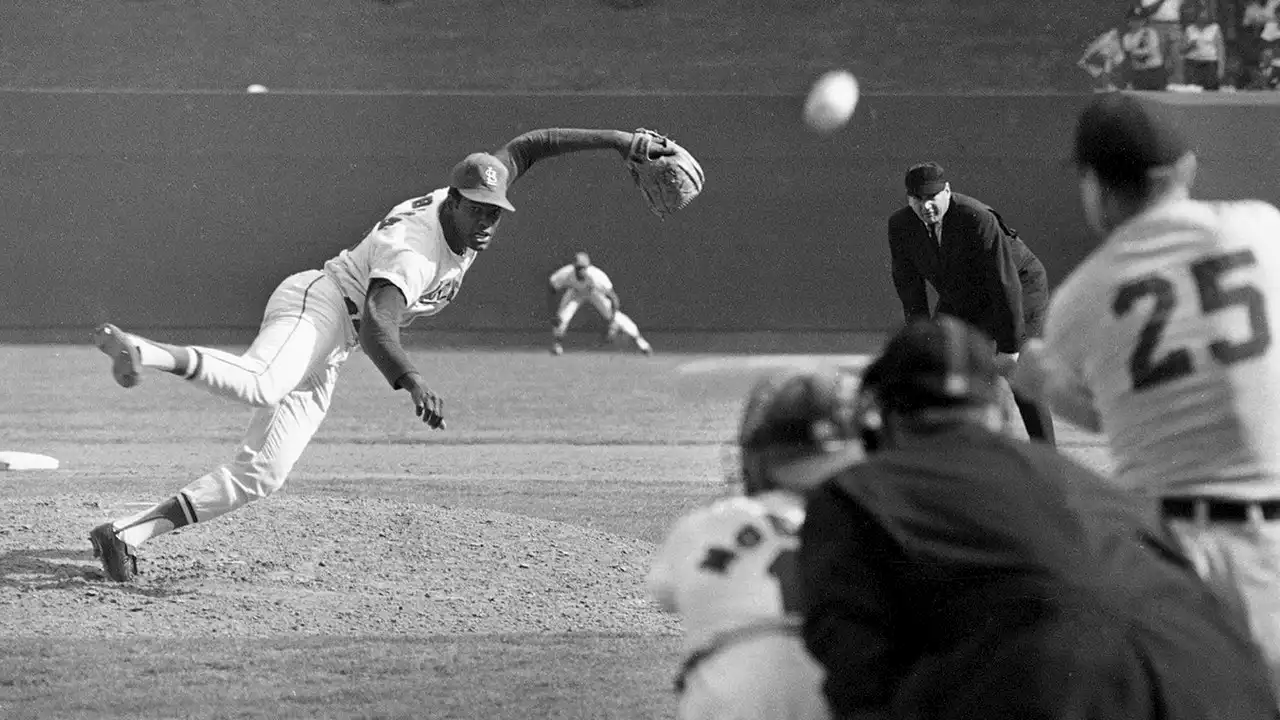Roger Angell on the genius of the pitcher Bob Gibson, from 1980. NewYorkerArchive
On the afternoon of October 2, 1968—a warm, sunshiny day in St. Louis—Mickey Stanley, the Detroit Tiger shortstop, singled to center field to lead off the top of the ninth inning of the opening game of the 1968 World Series. It was only the fifth hit of the game for the Tigers, who by this time were trailing the National League Champion St.
The pitch, as I have said, shot across the plate with a notable amount of right-to-left action, and his catchers sometimes gave the curious impression that they were cutting off a ball that was headed on a much longer journey—a one-hundred-foot fastball. But with Gibson pitching you were always a little distracted from the plate and the batter, because his delivery continued so extravagantly after the ball was released that you almost felt that the pitch was incidental to the whole affair.
When Bob Gibson retired, at the age of thirty-nine, at the end of the 1975 season, after seventeen summers with the Cardinals, he had won two hundred and fifty-one games, and his record of 3,117 strikeouts was second only to Walter Johnson’s 3,508. Last year, however, Gaylord Perry, who is still going strong at the age of forty-two, passed Gibson on the lifetime-strikeout list , while three other active pitchers—Nolan Ryan, Tom Seaver, and Steve Carlton—may surpass Gibson’s mark next summer.
McCarver is an intimate friend of Bob Gibson’s, and he told me that Gibson was much the same off the field as on the mound. “Bob is relatively shy,” he said. “He’s a nice man, but he’s quiet. He doesn’t enjoy small talk. He doesn’t like to waste his time with anything that’s weak or offhand. He wants to deal from strength all the time. That’s why he projects this uppity-black-man figure that so many people in baseball seem to hate.
Most ballplayers who are discussing a past rival or a teammate go directly to the man’s craft—what pitches he could hit, his arm, his range afield, or his stuff and what he threw when the count was against him. But I had begun to notice that the baseball people talking about Bob Gibson all seemed anxious to get at something deeper; Gibson the man was even more vivid and interesting to them than Gibson the great pitcher.
“Well, I never really liked being on the All-Star team,” he said. “I liked the honor of it, being voted one of the best, but I couldn’t get used to the idea of playing with people from other teams in the league—guys who I’d have to go out and try to beat just a couple of days later. I didn’t even like having Joe catch me—he was with the Braves then—because I figured he’d learn how to hit me.
Joe Torre had told me that the Agee-plunking was an accident, but I noted now that Gibson had not quite denied intention in the affair. He had put doubt in my mind, just as Torre had told me he would. He still wanted that edge. Gibson came back to win three games against the Red Sox in the World Series that fall, but his next serious injury, in midseason of 1973, took a heavier toll. Leading off first base in a game against the Mets at Shea Stadium, he made a sudden dive back toward the base after an infield line drive was caught, but collapsed when his right knee buckled.
To go back a little, Gibson also won his second start in the 1968 Cardinals–Tigers World Series—a 10–1 decision in the fourth game, during which he fanned ten batters and whacked a home run. It was Gibson’s seventh straight World Series victory—an all-time record.
A further thin cement of statistics will finish the monument. Gibson completed twenty-eight of the thirty-four games he started in 1968, and was never removed in the middle of an inning—never knocked out of the box. His 1.12 earned-run average is second only to the all-time low of 1.01, established by the Red Sox’ Hub Leonard in 1914, and it eclipsed the old National League mark of 1.22, set by Grover Cleveland Alexander in 1915.
I named some other mound stars of the sixties and seventies, and Gibson shrugged and shook his head. “I guess I was never much in awe of anybody,” he said. “I think you have to have that attitude if you’re going to go far in this game. People have always said that I was too confident, but I think you’ll find that most guys who can play are pretty cocky.
Gibby’s is a welcoming sort of place—a squared-off, three-sided bar downstairs, with strips of stained-glass decoration on the far wall and a short flight of steps up to the sun-filled upper level, where there are some comfortable wooden-backed dining booths and hanging plants everywhere. On a busy night—on Saturdays, for instance, when a jazz group comes in to play—Gibby’s has room for about a hundred and thirty diners and twenty more customers at the bar.
Gibson had allowed me to close this space a little by his willingness to talk about himself, and I had begun to sense the intensity of relationships with him that Tim McCarver had told me about, and the absence of any withdrawn places in him that Joe Torre had mentioned. There is reason to believe that he has allowed himself to become more approachable since he left the game.
At one point, I said to Gibson that when I had seen him play I had always been very much aware of the fact that he was a black athlete; somehow, his race had always appeared to be a considerable part of what he brought to the mound when he went to work out there.
United States Latest News, United States Headlines
Similar News:You can also read news stories similar to this one that we have collected from other news sources.
 John Stamos calls Bob Saget ‘a guardian angel with the dirtiest mouth’ in memorial speechJohn Stamos calls Bob Saget ‘a guardian angel with the dirtiest mouth’ in moving tribute
John Stamos calls Bob Saget ‘a guardian angel with the dirtiest mouth’ in memorial speechJohn Stamos calls Bob Saget ‘a guardian angel with the dirtiest mouth’ in moving tribute
Read more »
 Read the heartbreaking speech John Stamos gave at Bob Saget's memorial'Bob, I will never, ever have another friend like you. You will always be my best friend. You are my new guardian angel — a guardian angel with the dirtiest mouth and a heart as big and benevolent as forever.' - John Stamos
Read the heartbreaking speech John Stamos gave at Bob Saget's memorial'Bob, I will never, ever have another friend like you. You will always be my best friend. You are my new guardian angel — a guardian angel with the dirtiest mouth and a heart as big and benevolent as forever.' - John Stamos
Read more »
 Bob Dylan’s First Day with “Tangled Up in Blue”It is the one song in Dylan’s vast catalogue that he has never seemed to be finished with. The slightest lyrical change, shift in tempo, or variation in delivery causes the song to reveal itself in unexpected ways.
Bob Dylan’s First Day with “Tangled Up in Blue”It is the one song in Dylan’s vast catalogue that he has never seemed to be finished with. The slightest lyrical change, shift in tempo, or variation in delivery causes the song to reveal itself in unexpected ways.
Read more »
 John Stamos Shares His Touching Eulogy From Bob Saget’s MemorialA small, intimate funeral for Saget was held last Friday, attended by the comedian and actor's close friends and loved ones.
John Stamos Shares His Touching Eulogy From Bob Saget’s MemorialA small, intimate funeral for Saget was held last Friday, attended by the comedian and actor's close friends and loved ones.
Read more »
 John Stamos Publishes Eulogy From Bob Saget's FuneralJohn Stamos published his eulogy from Bob Saget's funeral this week. The Los Angeles [...]
John Stamos Publishes Eulogy From Bob Saget's FuneralJohn Stamos published his eulogy from Bob Saget's funeral this week. The Los Angeles [...]
Read more »
 Bob Saget's Wife Just Shared His Heartbreaking Final Message to Her — Best LifeBob Saget's wife, Kelly Rizzo, opened up about their final conversation before his unexpected death in a new interview with 'Today.'
Bob Saget's Wife Just Shared His Heartbreaking Final Message to Her — Best LifeBob Saget's wife, Kelly Rizzo, opened up about their final conversation before his unexpected death in a new interview with 'Today.'
Read more »
